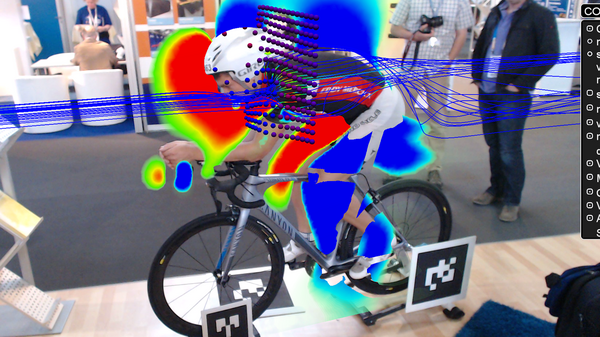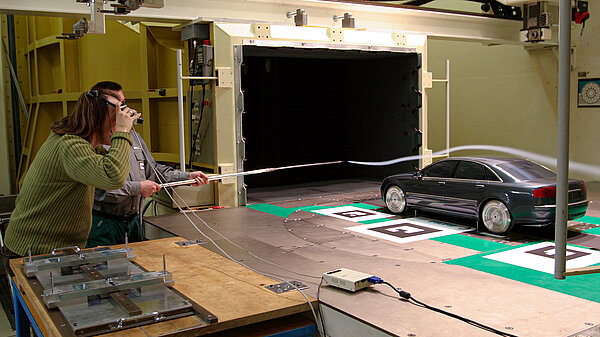High-Performance Computing Center Stuttgart

HLRS has expertise in realizing AR applications and tangible user interfaces using the visualization software COVISE. AR functionality is provided by a plugin interface that can be customized based on the user's needs and interests.

The hardware consists of an HMD, a stereo version of the Daeyang Cy-Visor and two pairs of PAL color cameras mounted on top of the HMD. It is connected to a Pentium IV PC with two video capture cards and a GeForce 4 Ti Graphics card running RedHat Linux.
Version 2 of the AR HMD is now equipped with two PointGrey DragonFly Firewire cameras with 1024x768 resolution and CS-Mount lenses. The computer was upgraded to a 3GHz Xeon system also running RedHat Linux.
Version 3 of the AR HMD is now equipped with two integrated USB2 auto focus cameras with a maximum resolution of 1280x1024.
The software system is currently based on COVISE and AR-Toolkit, ALVAR, or ARUCO but can easily be extended through a flexible plugin system. OpenCV is used to capture two sets of video streams for the left and right eye. It further recognizes markers and computes their relative position compared to the cameras. Virtual objects that have been visualized using COVISE can then be displayed on top of the video image at the correct position relative to the marker and with the correct perspective.